*** This article I have written some years ago was originally published here.
Essays are known to be the most widely used assessment of learning before multiple-choice tests were invented. Students are expected to exhibit learning by detailing answers to questions in prose.

Even today, in the presence of exam types that are easier to check and grade, teachers still consider essay as one of the most reliable assessments of student learning.
Essay as a Significant Academic Measurement
Essays have long been utilized to test students’ knowledge of a subject. This is because essays require students to exert effort and dig for deeper understanding to produce a sound answer to a prompt. In contrast with multiple-choice exams, students must make use of adequate set information to answer questions rather than just recalling or associating them with given choices. As support and proof are needed to justify answers, it also makes use of students’ schema. In addition, essays help teachers assess students’ ability to think critically.
Essays have long been utilized to test students’ knowledge of a subject. This is because essays require students to exert effort and dig for deeper understanding to produce a sound answer to a prompt. In contrast with multiple-choice exams, students must make use of adequate set information to answer questions rather than just recalling or associating them with given choices. As support and proof are needed to justify answers, it also makes use of students’ schema. In addition, essays help teachers assess students’ ability to think critically.
Student Suffering from Writer's Block


As essays leave room for expression of views, it is a good method to recognize the complexity of thought processes. Lastly, with writing a skill expected from almost all educated persons, essays challenge students to express their views in a grammatically and beautifully intertwined use of language.
Correcting Essays: Tips for Teachers
Evaluating students' writing is one of the most challenging tasks a language teacher may face. Essays are helpful in challenging students to express views on a given subject and should not be graded based on any general system. Other than just purely assigning numbers or letters for grades, essays are supposedly assessed with greater understanding that students differ in their efforts and accomplishments.
Evaluating students' writing is one of the most challenging tasks a language teacher may face. Essays are helpful in challenging students to express views on a given subject and should not be graded based on any general system. Other than just purely assigning numbers or letters for grades, essays are supposedly assessed with greater understanding that students differ in their efforts and accomplishments.
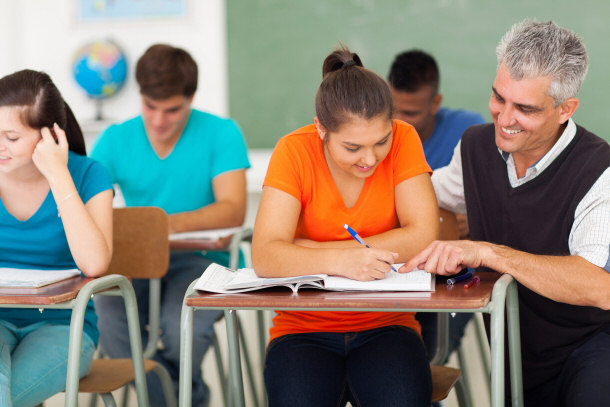
The following are the tips on how to correct student essays effectively.
- Read essays at least twice. When correcting essays, do not start grading the first time you read. It is best to scan first to understand the ideas the student wanted to convey. Upon getting the gist of the student’s work, it is easier to assess which parts of your performance expectations were met. The second time you read is the stage when you can start identifying communication failure in the composition. Often, what we feel was expressed by the student isn’t exactly what they mean to tell us. As a result, correcting students’ writing after the first time you read may result in mistakes in understanding what was meant, leading to improperly grading them afterward.
- Cover student’s name. Often times, we tend to be quite considerate when correcting or grading essays based on a student’s attitude in our classes. We can’t deny the fact that some students create good impressions and some don’t. When grading tests that do not require us to follow a specific list of right or wrong answers, we may be bias in correcting. To avoid this, it is best to fold the upper part of the essays to conceal the identity of the writers. Sometimes, teachers can even assign a number to a specific student in place of a name on the paper. With this, we can correct essays objectively and thus grade them fairly.
- Make use of rubrics. Recent development in education has paved way to grading designs for more subjective tests. In correcting student essays, it is best to grade and correct according to a specific standard. Because it separates and defines different performance levels expected from student output, rubrics aid teachers in giving precise ratings.
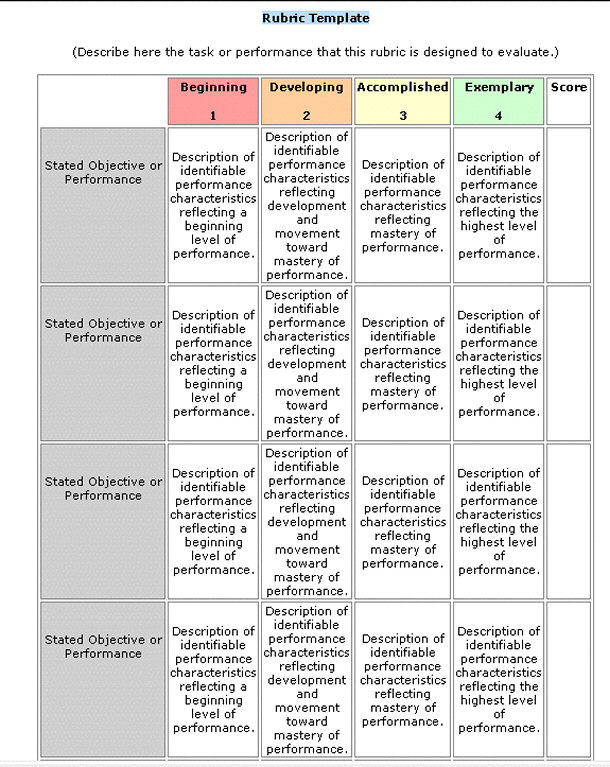
- When dealing with linguistically advanced students, a standardized rubric like those of SAT or TOEFL can be utilized. It is best, however, that a teacher designs rubrics for specific class or tasks. Remember that if the purpose of the essay is to describe, the focus of corrections will be on descriptions. Modify your rubrics to fit every kind of composition requirement with different expectations.
- Use editing marks. When assessing essays, do not attempt to write all your corrections and color your student paper with red marks. Studies say that students do not generally learn when they are bombarded with what they have done wrong. Additionally, marking every part of the essay takes too much of a teacher’s time. Avoid the temptation of proofreading your students’ essays for all types of errors.
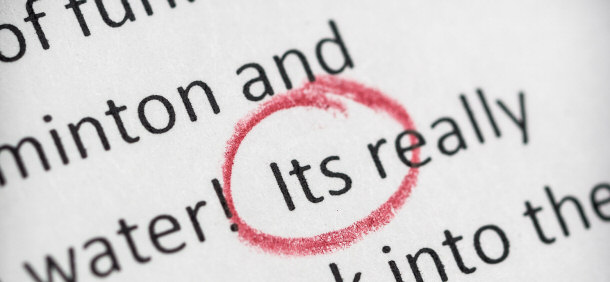
At the beginning of a term in your composition classes, it is advised that editing marks be introduced to students. This will make students discover for themselves the kind of mistakes committed and how to possibly correct them. Consequently, this can foster peer editing.
- Take note of students’ mistakes. Grading the papers after you have corrected them isn’t the last thing to do. A more conscientious teacher takes note of students’ most common mistakes. This list of things that challenges students can be taken up in class the next day. By starting with the errors, students will understand further why such mistake is committed. Alternately, the teacher must provide explanations on why some constructions are considered errors and what can students do to remedy them.

When a particular student commits the most mistakes at all times, the teacher should make the student consult, or have an assistant to help developing acceptable compositions. Keeping track of student’s mistakes can help teachers identify who among the class members needed extra attention and assistance.
- Include an end note. For a more traditional teacher, this might mean comments on the over-all writing performance of the student. For a more responsive one, this means formative comments. When correcting students’ essays, give honest and constructive comments by focusing on what was successfully applied or how much effort was visible in the composition. When end notes are non-offensive to students, they will serve as guides for achieving expectations. This gives them clear ideas on why a certain part is considered less acceptable and how they can do better. Be sure that end notes should serve as instruction not as a grading justification. To motivate your students, emphasize on what was accomplished rather than what was missed, and offer suggestions on how to improve their work.
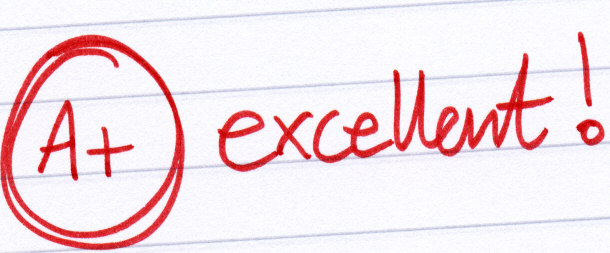
Focus on what the students did right.
- Return assignments promptly. Marking and commenting on essays is crucial, but teachers have to return students’ essays promptly. When students still have the enthusiasm on the result of tasks, they are eager to know how they performed. Return students’ work and be sure to review the points most of them failed to follow. Provide examples that contrast both acceptable and less acceptable alternatives. When students have their essays on hand, it is easier for them to clarify the markings and the possible remedies.

As you go along, students can identify their own mistakes and will find it easier to relate to the review of points. Consequently, they can take notes next to your markings and thus have lesser chances of committing the same mistake when doing the next task.
Conclusion:
It is perhaps challenging to correct and grade essays on any course or discipline. Assignments have different goals and expectations. Generally, no matter how divergent a student’s response is to the prompt, it is still worth some points, unless it is proven to have been plagiarized. Remember that students’ efforts deserve merits.
It is perhaps challenging to correct and grade essays on any course or discipline. Assignments have different goals and expectations. Generally, no matter how divergent a student’s response is to the prompt, it is still worth some points, unless it is proven to have been plagiarized. Remember that students’ efforts deserve merits.
Quite different from other types of tests, essays demand the teacher’s full attention to make sure that they are graded based on a standard set. It also requires teachers extra time to read, re-read, assess, and correct. Because this type of evaluation has long been considered subjective, many would think that grading might be based on how good a student’s image is to the teacher.
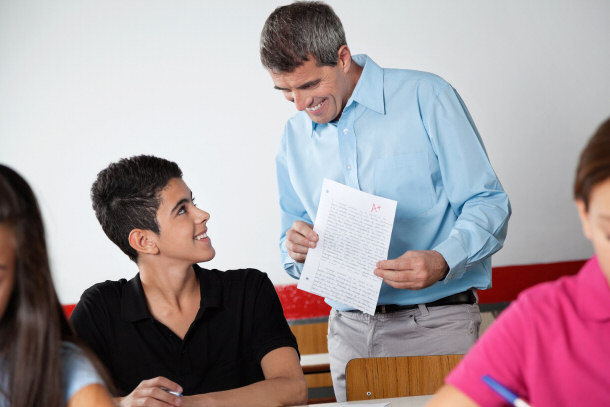
Since it is quite tempting to look at the names of the writers while reading a very interesting or frustrating composition, teachers are to practice being unbiased by concealing identities until after grading the papers. It is expected that compositions are to be graded based on a rubric which include style, ideas, organization and so on.
Writing grades do not end the teacher’s role in developing students’ ability to write essays as they are expected to provide end notes, review points or monitor students’ progress individually. As a complex skill, writing an essay requires schema from many other subjects learned, and a responsive teacher can direct students on how to make use of these knowledge by expressing them in a logically accepted form.

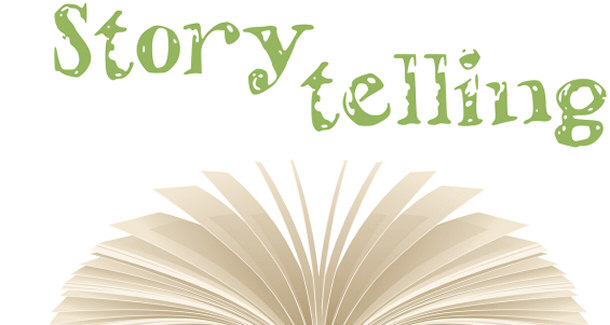
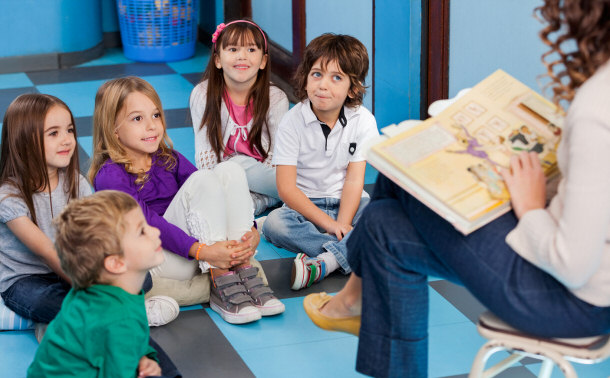





 It can never be denied that despite being in a language classroom, some students, especially younger ones, lack motivation to learn. Most find no meaning in acquiring a new language and eventually become non-achieving. The teacher then is tasked to critically choose stories that will not only encourage listening but language learning. When interest in a topic is aroused, attitudes towards learning the language are changed, making it enjoyable, meaningful and comprehensible to students.
It can never be denied that despite being in a language classroom, some students, especially younger ones, lack motivation to learn. Most find no meaning in acquiring a new language and eventually become non-achieving. The teacher then is tasked to critically choose stories that will not only encourage listening but language learning. When interest in a topic is aroused, attitudes towards learning the language are changed, making it enjoyable, meaningful and comprehensible to students.

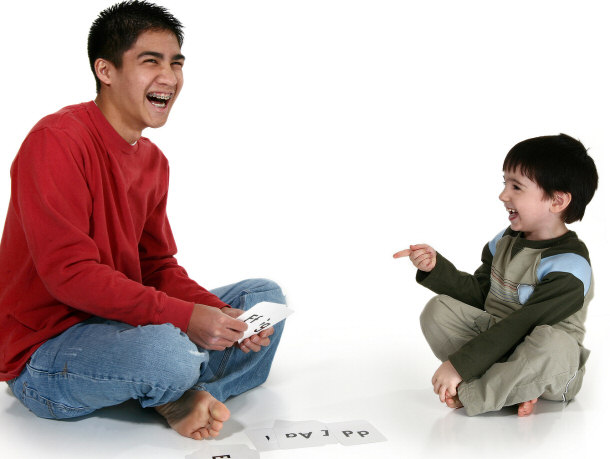


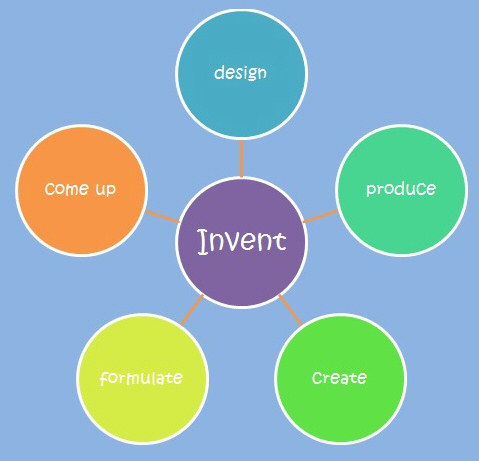
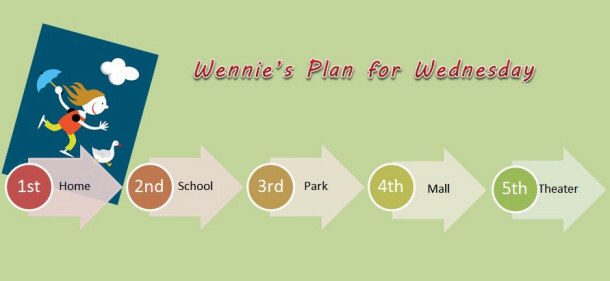
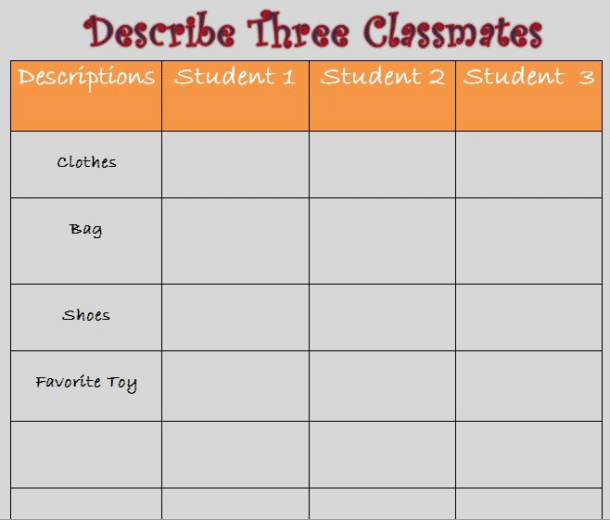
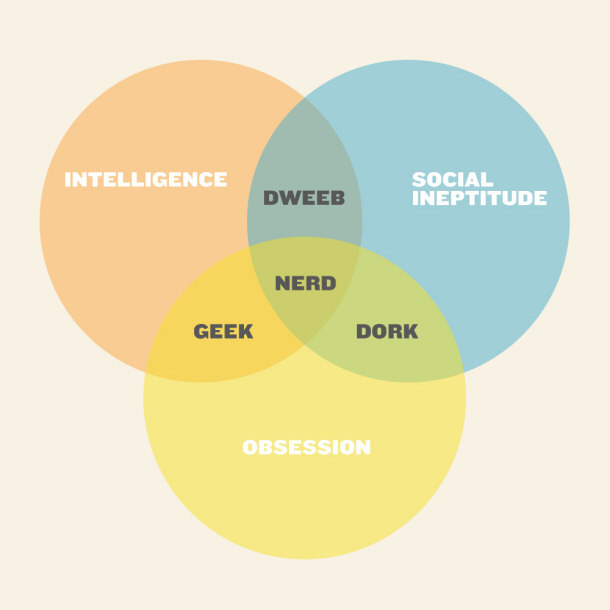

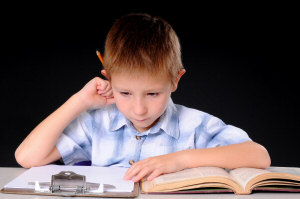 2.
2.



 Over the past decades, many countries have started to encourage citizens to adapt another language and become bilinguals, or better yet, multilingual. With this popularity of language learning, experts in English as a second language have never halted seeking for plans and designs that would ensure effective language acquisition among those who learn. For the majority of the language learners and proponents, learning to communicate in languages other than their mother tongue helps achieve progress on any chosen endeavor. Because English is the most prominent of all languages being learned, it is considered international and is often spoken in the business world.
Over the past decades, many countries have started to encourage citizens to adapt another language and become bilinguals, or better yet, multilingual. With this popularity of language learning, experts in English as a second language have never halted seeking for plans and designs that would ensure effective language acquisition among those who learn. For the majority of the language learners and proponents, learning to communicate in languages other than their mother tongue helps achieve progress on any chosen endeavor. Because English is the most prominent of all languages being learned, it is considered international and is often spoken in the business world. In the field of language teaching, achieving fluency and accuracy in one’s speech is the aim. It also means that being able to communicate what one means by production of sounds is an essential part of success academically or in life. Speaking and the role it plays in learning English are imperative to one’s accomplishments. Like learning other languages, the ability to speak and convey intended meaning is of utmost importance. Looking at the records of language teaching techniques, it is clear that many educators have put more emphasis on learning how to speak above the three other language skills. The number of people devoting much time and effort learning to speak English is important evidence that it is crucial to one’s achievement in school, the workplace and the competitive world.
In the field of language teaching, achieving fluency and accuracy in one’s speech is the aim. It also means that being able to communicate what one means by production of sounds is an essential part of success academically or in life. Speaking and the role it plays in learning English are imperative to one’s accomplishments. Like learning other languages, the ability to speak and convey intended meaning is of utmost importance. Looking at the records of language teaching techniques, it is clear that many educators have put more emphasis on learning how to speak above the three other language skills. The number of people devoting much time and effort learning to speak English is important evidence that it is crucial to one’s achievement in school, the workplace and the competitive world.
 As most teachers wish to develop their students proficiency in the language, they may employ the rule on speaking and transacting business with them in English. As an influential factor in the academic life, teachers can be role models and leading the way maximizes the chance to become fluent. In 1993, research by Green claimed that a sensitive teacher is able to generate and sustain the desire to learn the language even with poorly motivated learners. Additionally, the implementation of the “English Zones” pushes students to speak in the target language to keep up with those around them or to avoid getting fined. When school zones demand communicating in English and are implementing it strictly, students are compelled to adhere to the rules while getting themselves accustomed with the target language.
As most teachers wish to develop their students proficiency in the language, they may employ the rule on speaking and transacting business with them in English. As an influential factor in the academic life, teachers can be role models and leading the way maximizes the chance to become fluent. In 1993, research by Green claimed that a sensitive teacher is able to generate and sustain the desire to learn the language even with poorly motivated learners. Additionally, the implementation of the “English Zones” pushes students to speak in the target language to keep up with those around them or to avoid getting fined. When school zones demand communicating in English and are implementing it strictly, students are compelled to adhere to the rules while getting themselves accustomed with the target language. Since periodicals are an authentic material for language learning, it helps students enhance their skills in vocabulary and sentence construction. Often, as students read, they become familiar with the styles employed by writers and may even find some to adapt as their english composition technique. They also serve as a challenge to students’ comprehension and opens doors to learning things they had hardly heard of or known before. As readers, they will develop into students with social consciousness. With the information they get from what they read, students are equipped with knowledge, making them more competent in expressing opinions with confidence.
Since periodicals are an authentic material for language learning, it helps students enhance their skills in vocabulary and sentence construction. Often, as students read, they become familiar with the styles employed by writers and may even find some to adapt as their english composition technique. They also serve as a challenge to students’ comprehension and opens doors to learning things they had hardly heard of or known before. As readers, they will develop into students with social consciousness. With the information they get from what they read, students are equipped with knowledge, making them more competent in expressing opinions with confidence. Preparations for oral recitations compel the students to review and thus develop their dispositions in academics. Additionally, preparing to perform well in oral recitations exhibit their attitudes towards expressing what they want to say. With their level of motivation and preparation, they are likely to develop the ability to acquire language faster than others. Equally important, when students are bound to prove they can do better in class, part of uplifting status is participating in recitations and nailing the ideas teachers want to hear.
Preparations for oral recitations compel the students to review and thus develop their dispositions in academics. Additionally, preparing to perform well in oral recitations exhibit their attitudes towards expressing what they want to say. With their level of motivation and preparation, they are likely to develop the ability to acquire language faster than others. Equally important, when students are bound to prove they can do better in class, part of uplifting status is participating in recitations and nailing the ideas teachers want to hear. Because good reports are the ones that are delivered in an informal way, students are exposed to authentic practice they can employ outside the classroom. Alternately, the teacher can ask some students to share what they have to say about the topics discussed. Equally important, post-reporting activities may include clarifications or explanations of ideas.
Because good reports are the ones that are delivered in an informal way, students are exposed to authentic practice they can employ outside the classroom. Alternately, the teacher can ask some students to share what they have to say about the topics discussed. Equally important, post-reporting activities may include clarifications or explanations of ideas. Writing is considered the most difficult language skill to master, so instilling this interest to ESL students is twice as challenging. With the need to use correct expressions following the standard conventions of grammar and compositions, students whose first language is not English might grasp for words to complete a single sentence expressing what was required to be written. It should be remembered, however, that when topics are directly connected with our interests, it is easier to write.Students are motivated to give their best, expressing thoughts on paper, when they are given the chance to write about something they know deeply or have experienced personally. It is necessary that teachers should devise ways on how to make writing classes engaging. Instead of compelling students to write on generic ideas, make use of significant events in their lives to produce excellent compositions.
Writing is considered the most difficult language skill to master, so instilling this interest to ESL students is twice as challenging. With the need to use correct expressions following the standard conventions of grammar and compositions, students whose first language is not English might grasp for words to complete a single sentence expressing what was required to be written. It should be remembered, however, that when topics are directly connected with our interests, it is easier to write.Students are motivated to give their best, expressing thoughts on paper, when they are given the chance to write about something they know deeply or have experienced personally. It is necessary that teachers should devise ways on how to make writing classes engaging. Instead of compelling students to write on generic ideas, make use of significant events in their lives to produce excellent compositions. The types of teaching strategies employed in the classroom are manifestations of the teacher’s belief. Articulated or not, they always play an important role in the way the class is carried and led to the achievement of goals. Our beliefs as educators affect our choice of resources, assessment and organization of class activities. No matter how different the beliefs may be, teachers should ensure that writing classes are made fun and interesting.
The types of teaching strategies employed in the classroom are manifestations of the teacher’s belief. Articulated or not, they always play an important role in the way the class is carried and led to the achievement of goals. Our beliefs as educators affect our choice of resources, assessment and organization of class activities. No matter how different the beliefs may be, teachers should ensure that writing classes are made fun and interesting. Students are to be asked to bring to class their favorite photos or set of photos. With this, it is sure that students picked what they think is the most interesting and, thus, will be able to share views or stories based on them. Remember that visuals are powerful in providing context for any writing pieces and students can easily start writing a topic that sparks their attention or curiosity. Because it was a free choice to bring any picture, perhaps students chose it for being stimulating and attractive. In addition, since it is something they brought from home, they are knowledgeable about the place, time, event and people in captured in print. As students take hold of their favorite photo, ask them to look for details they may want to use as the main idea for writing. Prompt them to look for something interesting or funny, to spot things that are colorful, or to describe shapes or facial expressions.
Students are to be asked to bring to class their favorite photos or set of photos. With this, it is sure that students picked what they think is the most interesting and, thus, will be able to share views or stories based on them. Remember that visuals are powerful in providing context for any writing pieces and students can easily start writing a topic that sparks their attention or curiosity. Because it was a free choice to bring any picture, perhaps students chose it for being stimulating and attractive. In addition, since it is something they brought from home, they are knowledgeable about the place, time, event and people in captured in print. As students take hold of their favorite photo, ask them to look for details they may want to use as the main idea for writing. Prompt them to look for something interesting or funny, to spot things that are colorful, or to describe shapes or facial expressions. Students asking teachers for translation, vocabulary or possible main ideas is a typical scene in ESL writing classes. With students having the ideas as inspired by their photos, the challenge comes with decoding the message in the pictures and converting them into excellent write-ups. As a teacher, being able to provide the correct information for the student is fulfilling yet tiring. Despite its difficulty, it should be noted that students must exert twice or thrice the effort to express what they want to say. Scaffolding is a helpful strategy in writing classes as it helps break up complex tasks into smaller, simpler pieces of information. Additionally, it gives teachers the chance to intervene with the students’ work and lessen, if not totally eliminate, misunderstanding of concepts and difficulties in following formal writing conventions. Because second language learners may not have enough knowledge of the topics or the rules, they are facing the trial of getting into the unknown. No matter how simple rules or words may be, this isn’t the case for many ESL students, especially those who are beginners or approaching intermediate levels. Typically, they have limited ideas on how writing should be like, how it should be organized, or how to make writings understandable to readers. When left on their own, they are bound to miss the standards. With your students holding their favorite picture, take time to ask them what they can see and which would they want to write about or would like others to know.
Students asking teachers for translation, vocabulary or possible main ideas is a typical scene in ESL writing classes. With students having the ideas as inspired by their photos, the challenge comes with decoding the message in the pictures and converting them into excellent write-ups. As a teacher, being able to provide the correct information for the student is fulfilling yet tiring. Despite its difficulty, it should be noted that students must exert twice or thrice the effort to express what they want to say. Scaffolding is a helpful strategy in writing classes as it helps break up complex tasks into smaller, simpler pieces of information. Additionally, it gives teachers the chance to intervene with the students’ work and lessen, if not totally eliminate, misunderstanding of concepts and difficulties in following formal writing conventions. Because second language learners may not have enough knowledge of the topics or the rules, they are facing the trial of getting into the unknown. No matter how simple rules or words may be, this isn’t the case for many ESL students, especially those who are beginners or approaching intermediate levels. Typically, they have limited ideas on how writing should be like, how it should be organized, or how to make writings understandable to readers. When left on their own, they are bound to miss the standards. With your students holding their favorite picture, take time to ask them what they can see and which would they want to write about or would like others to know.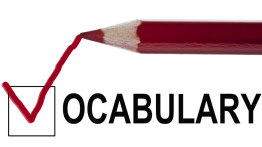 They said that a good mechanic always has his toolbox full of essential tools. Writers have the need for this toolbox in the form of vocabulary, punctuation, and grammar. Some tools are used more frequently than others, but the box is to be filled with new ones regularly. Writers need to make use of the tools in the box to make writing more powerful and compelling. This is where the need for vocabulary comes in. Students can never write with limited set of words, and with the teacher’s help, this can be augmented. With the picture in hand, struggling students can be supported while helping them think. Teachers can ask questions like the 5ws (what, when, where, why, who) and the 1h (how) to help find words for the sentences. Instead of readily providing the student with words, they can be asked for the names, shapes, color or location of things found on the photo. As they arrive at answers, make them create a list, so there are words to be included in their writings. You can also require students to bring dictionary with words from their native language to English or the other way around. As they progress on their vocabulary work, encourage them to use only the English dictionary. Because ESL students tend to choose the more difficult synonym of a word, they might convey different meanings. This is where teachers can now explain the importance of correct choice of words.
They said that a good mechanic always has his toolbox full of essential tools. Writers have the need for this toolbox in the form of vocabulary, punctuation, and grammar. Some tools are used more frequently than others, but the box is to be filled with new ones regularly. Writers need to make use of the tools in the box to make writing more powerful and compelling. This is where the need for vocabulary comes in. Students can never write with limited set of words, and with the teacher’s help, this can be augmented. With the picture in hand, struggling students can be supported while helping them think. Teachers can ask questions like the 5ws (what, when, where, why, who) and the 1h (how) to help find words for the sentences. Instead of readily providing the student with words, they can be asked for the names, shapes, color or location of things found on the photo. As they arrive at answers, make them create a list, so there are words to be included in their writings. You can also require students to bring dictionary with words from their native language to English or the other way around. As they progress on their vocabulary work, encourage them to use only the English dictionary. Because ESL students tend to choose the more difficult synonym of a word, they might convey different meanings. This is where teachers can now explain the importance of correct choice of words. Perhaps one of the most interesting challenges for students in writing classes is the task to find what they think are the differences among the subjects of the photo. If students find it difficult to choose ideas for their writing, ask them to find at least five or ten differences among people or things in the picture. If they are the owner of the photos, they might as well be triggered to look closely as they know the people or things in the image. This activity will help your students develop accuracy in descriptions and make use of the vocabulary they listed. Alternately, when there are limited elements to contrast, you can let them compare. This is where they can make use of descriptions like colors, shapes, sizes, actions, directions and so on. When the students are able to do the first two tasks with ease, challenge them to compare and contrast elements in a single write-up. Making students do these exercises will help develop the ability to analyze likeness and differences while keeping in mind that one description can’t go without the other. To make even easier for students, encourage them to make use of a graphic organizer like a Venn diagram to visualize and organize ideas more clearly.
Perhaps one of the most interesting challenges for students in writing classes is the task to find what they think are the differences among the subjects of the photo. If students find it difficult to choose ideas for their writing, ask them to find at least five or ten differences among people or things in the picture. If they are the owner of the photos, they might as well be triggered to look closely as they know the people or things in the image. This activity will help your students develop accuracy in descriptions and make use of the vocabulary they listed. Alternately, when there are limited elements to contrast, you can let them compare. This is where they can make use of descriptions like colors, shapes, sizes, actions, directions and so on. When the students are able to do the first two tasks with ease, challenge them to compare and contrast elements in a single write-up. Making students do these exercises will help develop the ability to analyze likeness and differences while keeping in mind that one description can’t go without the other. To make even easier for students, encourage them to make use of a graphic organizer like a Venn diagram to visualize and organize ideas more clearly. Yes, pictures can be used to help students find good writing ideas and to review them on grammar rules. Another way in making students produce good compositions is to use pictures as a springboard for main ideas. Instead of asking them to just describe it plainly, you can trigger their imagination by giving them prompts like, “If I were here…” or asking them questions like, “What would you be doing if you were/weren’t in the scene?” As students are holding on to their favorite photo of landscape, park, party or overseas travel, they would think of possibilities and would be compelled to imagine what’s otherwise. Equally important, they would be pushed onto making sentences expressing conditions, making use of their prior knowledge from grammar lectures. Additionally, asking students to come up with ideas opposite to what they can see directly will enhance their imagination- a very important skill in creating great compositions.
Yes, pictures can be used to help students find good writing ideas and to review them on grammar rules. Another way in making students produce good compositions is to use pictures as a springboard for main ideas. Instead of asking them to just describe it plainly, you can trigger their imagination by giving them prompts like, “If I were here…” or asking them questions like, “What would you be doing if you were/weren’t in the scene?” As students are holding on to their favorite photo of landscape, park, party or overseas travel, they would think of possibilities and would be compelled to imagine what’s otherwise. Equally important, they would be pushed onto making sentences expressing conditions, making use of their prior knowledge from grammar lectures. Additionally, asking students to come up with ideas opposite to what they can see directly will enhance their imagination- a very important skill in creating great compositions. 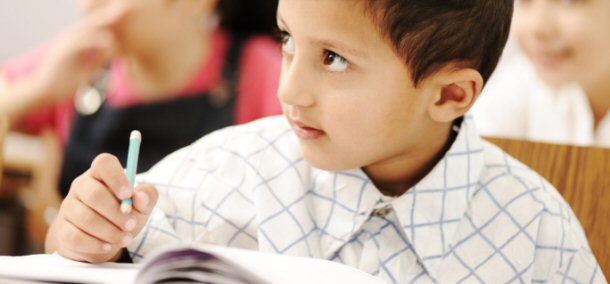
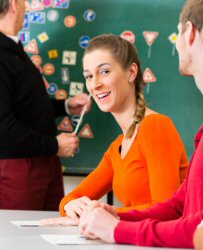 Otherwise known as CRT, criterion referenced tests are designed to measure how well students have learned a certain body of knowledge or subject and the skills associated with such. In everyday situations, the most common examples of this test can be the multiple choice exams people take when they apply for a driver’s license. This means that in order to pass, they must know, to a certain degree, things that deal with the specific subject which is driving. Academically, it is a type of test that measures how well a student has learned a material taught in a certain school year or semester.
Otherwise known as CRT, criterion referenced tests are designed to measure how well students have learned a certain body of knowledge or subject and the skills associated with such. In everyday situations, the most common examples of this test can be the multiple choice exams people take when they apply for a driver’s license. This means that in order to pass, they must know, to a certain degree, things that deal with the specific subject which is driving. Academically, it is a type of test that measures how well a student has learned a material taught in a certain school year or semester.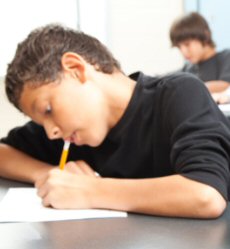 Criterion referenced tests in the classroom (when well prepared and aligned with the subject’s goals), help teachers identify points where students need extra assistance or review. CRT sees how students performed against the standard, comparing them to themselves alone, not with peers. This brings many advantages such as:
Criterion referenced tests in the classroom (when well prepared and aligned with the subject’s goals), help teachers identify points where students need extra assistance or review. CRT sees how students performed against the standard, comparing them to themselves alone, not with peers. This brings many advantages such as: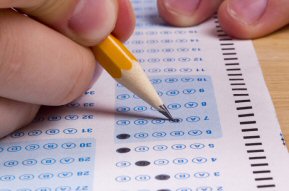 Considered by many students as the easiest, this type of exams cause lesser anxiety and give students hint on the correct choices. This, however; should be made patiently, making sure every item requires the students to think and discriminate choices to arrive at the correct answers. Obviously correct answers, as a result of poor item analysis, defeat the purpose of measuring how much the students have learned from the lessons. Additionally, this enables teachers to design tests that compel students to make intelligent choices, going beyond answering literal questions. Equally important, CRTs of multiple choice design help students develop the ability to use context in understanding test items. In language classes, for example, this can be done by providing choices from which they can choose the one that best completes the sentence patterns.
Considered by many students as the easiest, this type of exams cause lesser anxiety and give students hint on the correct choices. This, however; should be made patiently, making sure every item requires the students to think and discriminate choices to arrive at the correct answers. Obviously correct answers, as a result of poor item analysis, defeat the purpose of measuring how much the students have learned from the lessons. Additionally, this enables teachers to design tests that compel students to make intelligent choices, going beyond answering literal questions. Equally important, CRTs of multiple choice design help students develop the ability to use context in understanding test items. In language classes, for example, this can be done by providing choices from which they can choose the one that best completes the sentence patterns.